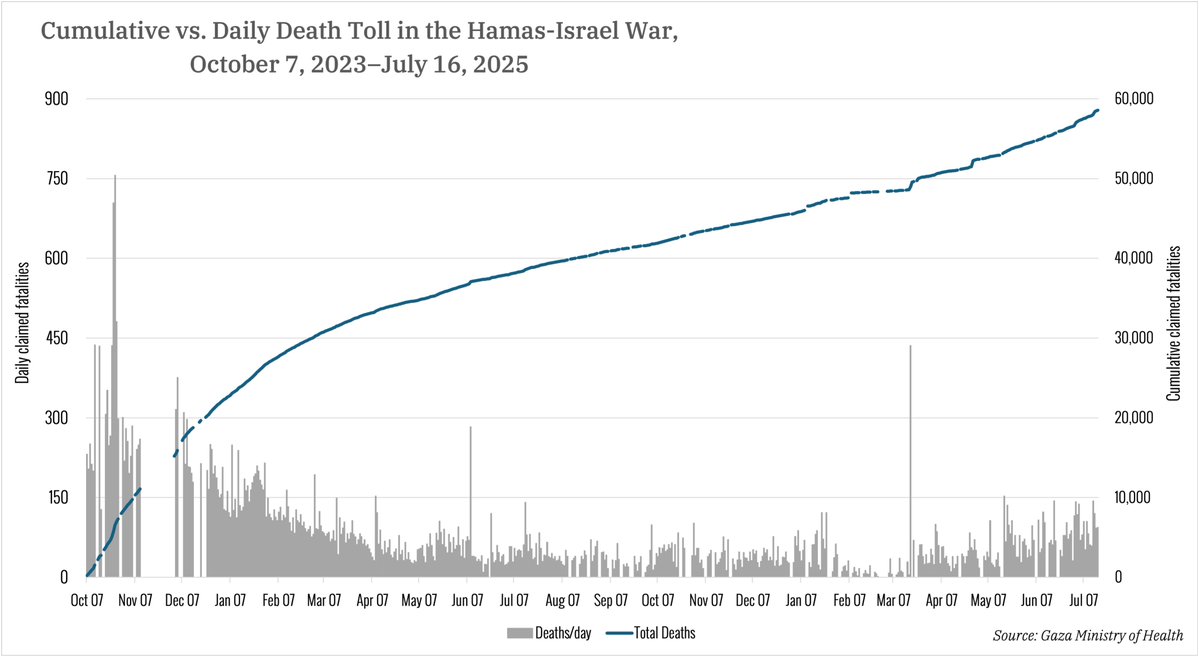3 months after Gaza aid resumed: Aid flows increase, but looting of food aid is near-universal; GHF aid expands, commercial traffic picks up, and airdrops continue. The emerging status quo turns aid into a profit source and harms the vulnerable. Long 🧵(one on prices to follow):
Goods flow into Gaza via several channels: U.N.-facilitated aid under the 2720 mechanism (~1/3), the GHF (~1/3), and a mix of airdrops, state and NGO donors outside the U.N. mechanism, and commercial traffic. COGAT reports 182,592 tons of aid have entered Gaza since May 19. 

This includes 171,400 tons of food aid. This is below the 62,000 tons/month WFP projects as Gaza’s baseline needs, but aid flows have increased over time and nearly 62,000 tons of food have already entered this month.
However, access to food is very dependent on one’s location and financial means due to mass looting. Food does not equally reach all parts of Gaza, nor is it equitably distributed — in other words, poorer and more vulnerable Gazans face much greater insecurity than others.
The U.N. 2720 mechanism tracks, coordinates, and facilitates aid from WFP, WHO, UNICEF, the Red Cross, World Central Kitchen, and other large aid providers, from manifesting to offloading, collection, and attempted delivery. More here:
https://x.com/GabrielEpsteinX/status/1957812717701443756
However, the mechanism has been plagued by looting, with 89% of all aid looted by gangs or crowds. Combined with insufficient collection of aid at border crossings, less than 10% of aid has been effectively delivered in the past 3 months (and much less when looking only at food). 

Medical and nutritional aid have a better chance of getting through. In the past week, only 0.04% of food aid has been successfully delivered, compared to 87% of nutritional aid and all health aid. Non-food aid is often clearly marked and appeals are made to let it pass. 

Organizational approaches matter too. Some, like UNICEF, contract with private security companies or rely on clans for protection and see a higher success rate, while WFP has adopted a policy to allow its convoys to be looted. More here: 
https://x.com/GabrielEpsteinX/status/1953875809724239952

This may reflect a philosophical difference between organizations, with some pushing for any way to get aid successfully delivered and others highlighting the risks of using armed security or trying to evade crowds. There is no perfect solution to a breakdown of law and order.
GHF continues to operate three sites, primarily distributing boxed dry goods. In recent weeks, GHF has begun distributing onions, potatoes, and nutritional supplements, added women-only distributions, and is testing a registration system for recipients.
https://x.com/GabrielEpsteinX/status/1957478518960386367
Calculating the total quantity of GHF aid distributed is difficult, but best done by weight. Going by estimated weight at 18 kg/box, GHF has distributed ~43,000 tons in boxed aid. Added to that are at least 231 truckloads of onions and potatoes and 126,200 RUSF packets.
GHF continues to face capacity issues and violent incidents on the routes to sites continue at a lower level. A U.S. initiative to quadruple the number of GHF sites and inject major funding remains unclear while an invasion of Gaza City could prevent expansion of the program.
GHF aid is not looted in transit, since the trucks only move through IDF-controlled areas. But firsthand accounts report a major market in GHF aid, sometimes right outside the compound, and the main distribution remains a free-for-all. 
https://x.com/GabrielEpsteinX/status/1956113181492875652

Aid also flows outside the U.N. and GHF frameworks. Some is state-sponsored aid from Egypt and the UAE. Others comes from NGOs like the Multifaith Alliance and IsrAID, which work quietly on the ground and liaise directly with COGAT. 



Commercial inflows continues, and since August 6 over 20,000 tons have entered Gaza with a wide array of goods. This channel is not tracked after entry, but much appears to have been looted and there have been violent incidents with security or drivers trying to evade crowds.
As of August 19, 2,402 pallets of food aid have been airdropped into Gaza by 14 countries, mostly Arab and EU states. Assuming 0.25 tons/pallet, this is ~2.1% of food aid (looted or actually delivered) via the U.N. channel or 3-4% of GHF aid. 

Airdrops are simpler and flashier for states looking to donate aid and can reach deeper into Gaza, but are more expensive and move small quantities, risk injuring Gazans when falling or during the scramble to loot them, and are subject to the same free-for-all as all other aid.
Every aid mechanism is affected by the lack of law and order to different degrees, and most aid inflows are simply feeding the major black market for looted aid. Without functioning central kitchens and bakeries, Gazans too poor to buy food remain at serious risk.
Many actors profit from this state of affairs: merchants, currency vendors, Hamas and other militant groups, and armed gangs and powerful clans. So long as the chaos is beneficial to power brokers and the war continues, it will be hard to right the course on aid.
Sources:
COGAT: gaza-aid-data.gov.il/main/
U.N. 2720 mechanism: info.un2720.org
U.N. 2720 dashboard: app.un2720.org/tracking
GHF: ghf.org
IsrAID: timesofisrael.com/as-humanitaria…
Multifaith Alliance: foxnews.com/world/she-fed-…
The next thread will address prices.
COGAT: gaza-aid-data.gov.il/main/
U.N. 2720 mechanism: info.un2720.org
U.N. 2720 dashboard: app.un2720.org/tracking
GHF: ghf.org
IsrAID: timesofisrael.com/as-humanitaria…
Multifaith Alliance: foxnews.com/world/she-fed-…
The next thread will address prices.
• • •
Missing some Tweet in this thread? You can try to
force a refresh

















